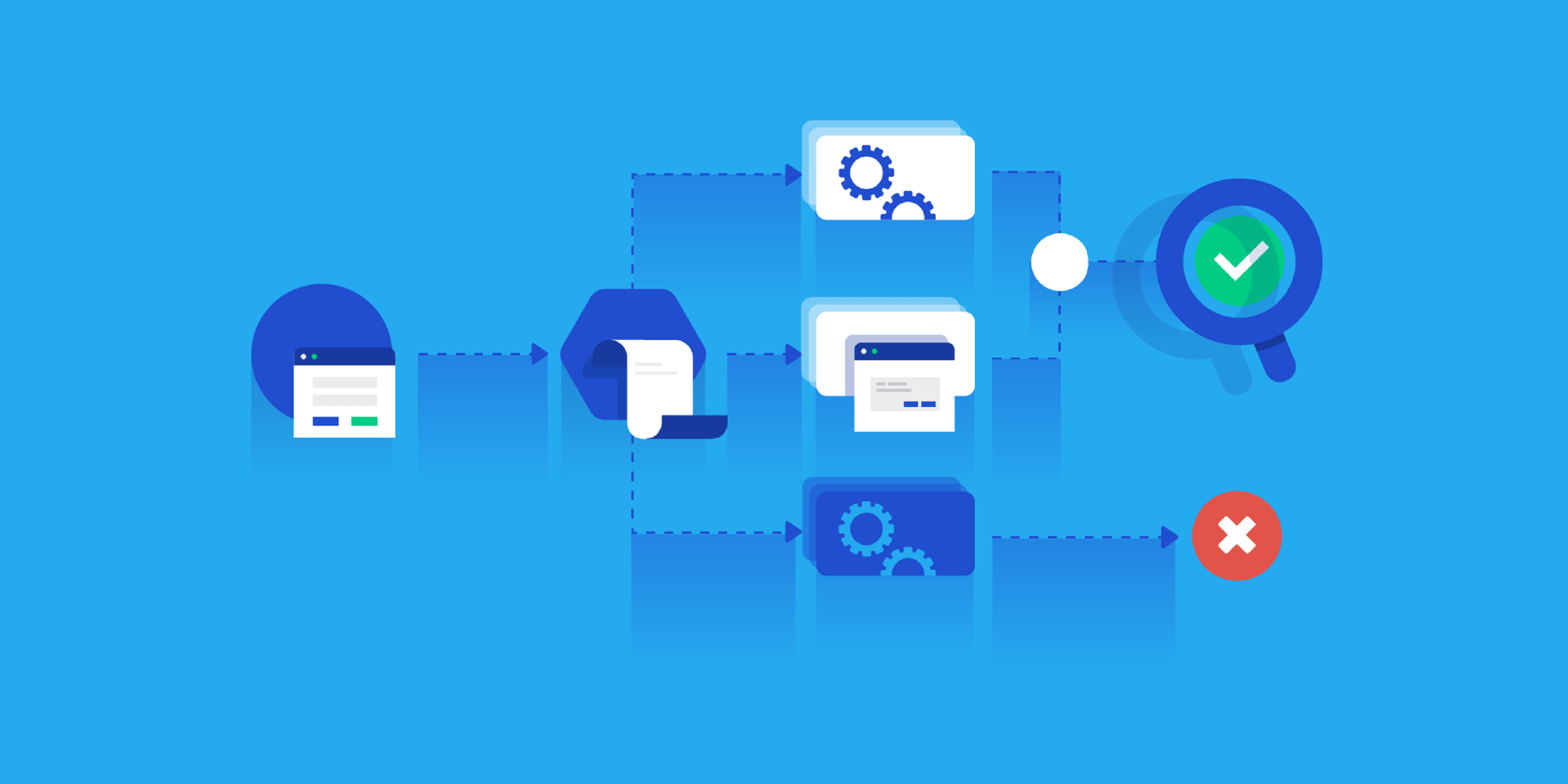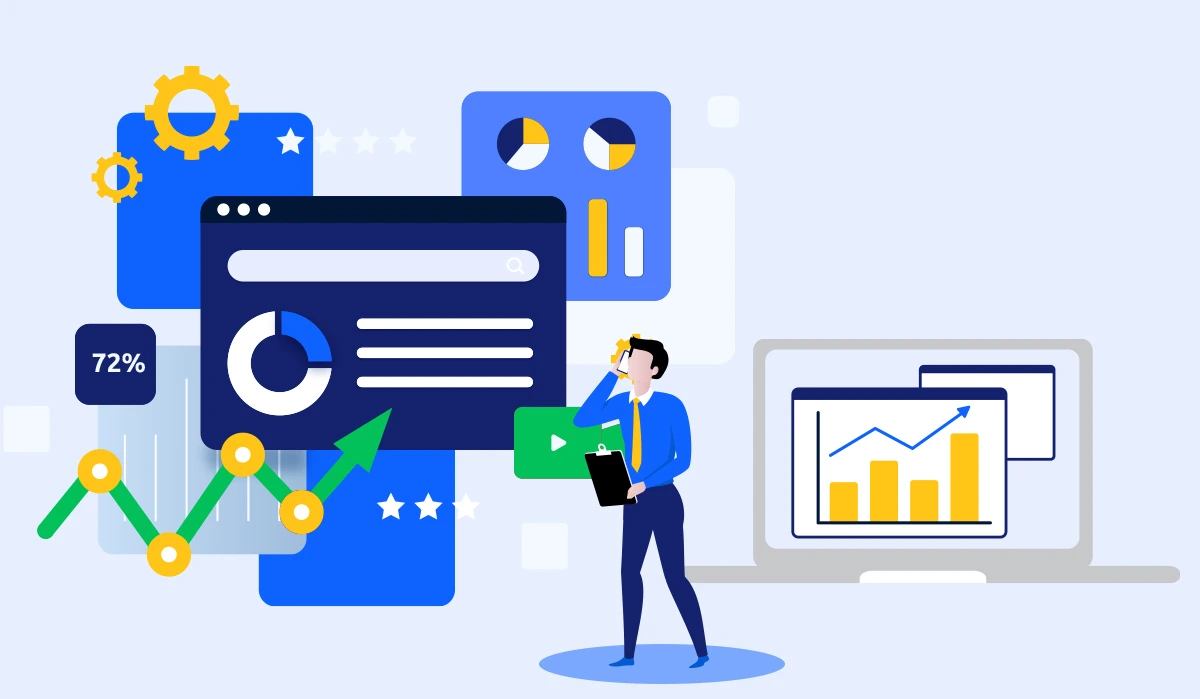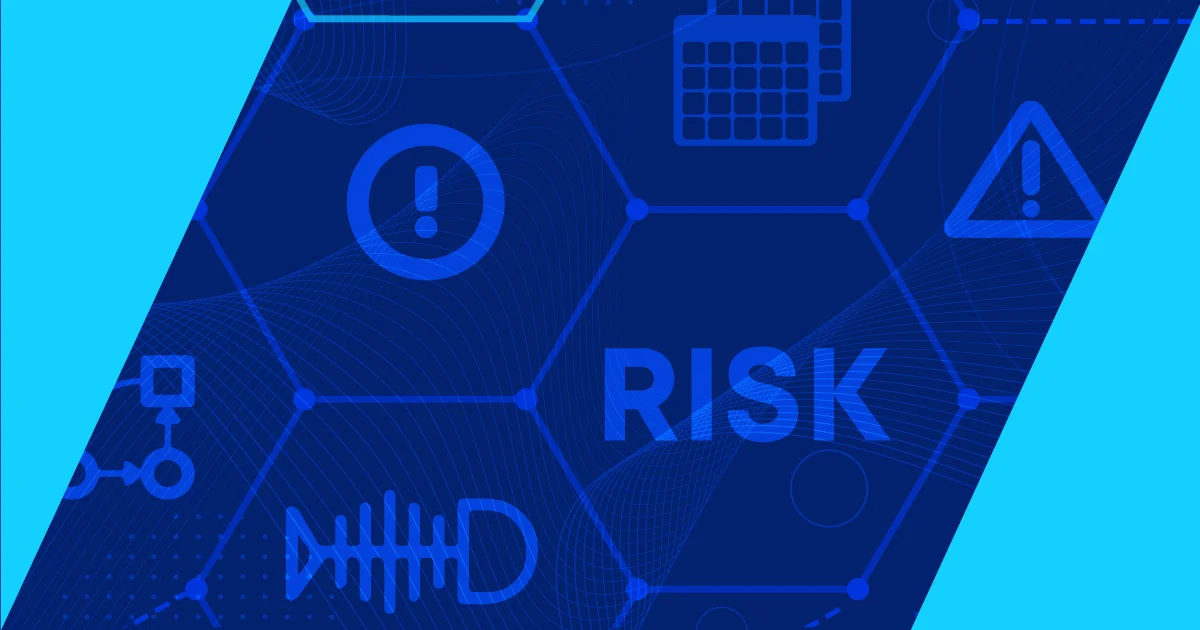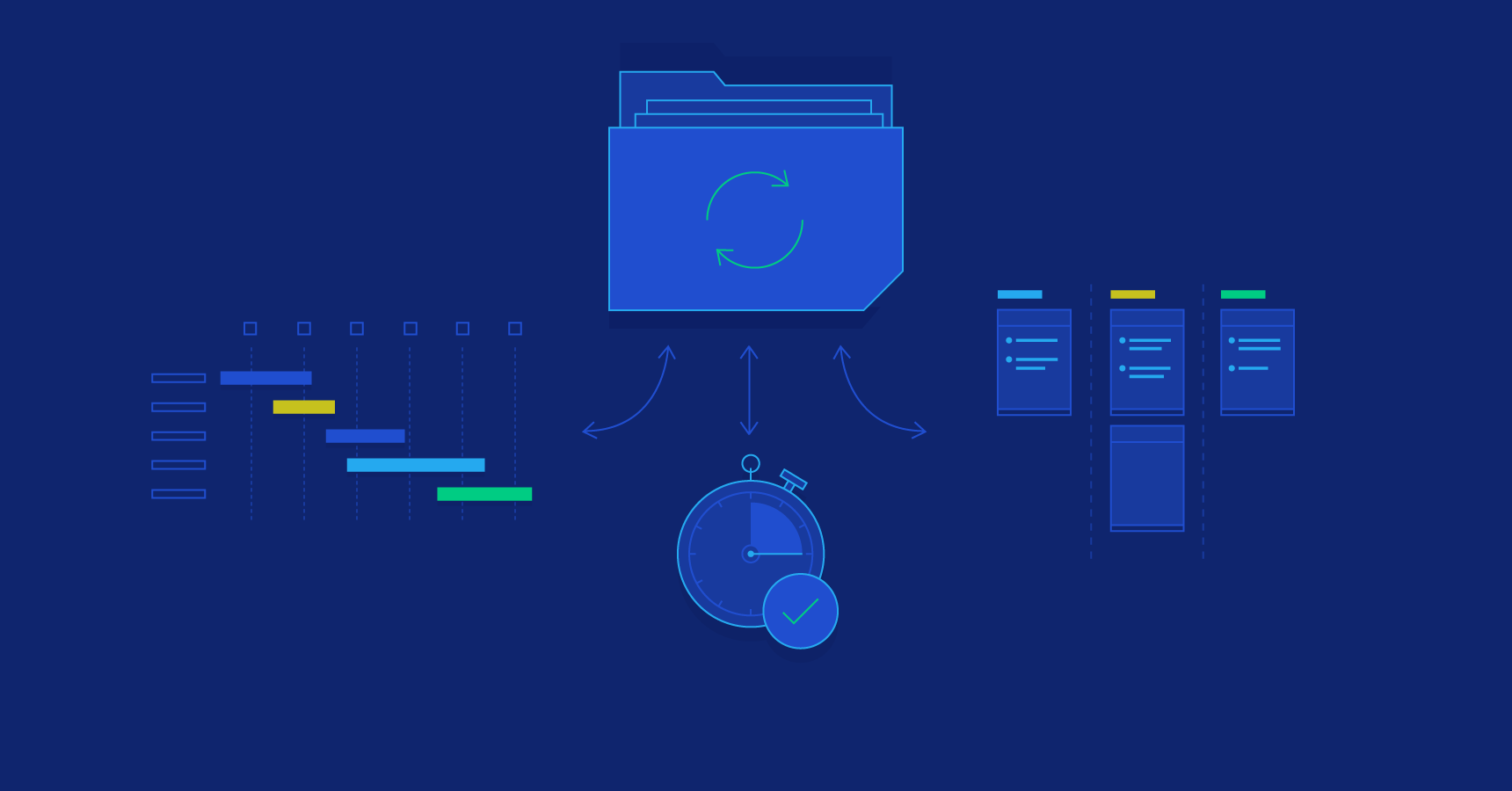Digital transformation vs Digital Optimization are buzzwords that are gaining significant traction in the business world, especially since most companies now incorporate some form of digital technology. They are intertwined ideas that assist companies in navigating, adapting to, and capitalizing on changes in the business environment.
Though they share many similarities, these approaches are complementary rather than contradictory. Investing in digital transformation commonly necessitates subsequent digital optimization efforts, just as an investment in digital optimization can often speed up the process of digital transformation.
For organizations aiming to fuel growth through product innovation, incorporating both of these strategies into their overarching plans is advisable. Digital transformation paves the way for the development of new products, while digital optimization refines and enhances them. In this article, let’s dissect each of these concepts to understand the nuances and, most importantly, decide which strategy aligns best with your business goals.
Table of Contents
What Is Digital Optimization?
Digital optimization refers to the process of refining and improving digital assets, processes, and strategies to enhance performance, usability, and overall effectiveness. Unlike digital transformation, which often involves a fundamental shift in business operations and models, digital optimization is more about fine-tuning existing digital elements. The goal is to maximize efficiency, boost user engagement, improve customer experience, and ultimately drive business outcomes. It emphasizes long-term growth, customer satisfaction, and fostering a culture of innovation.

This approach enables agile team dynamics by promoting quick decision-making grounded in actionable insights from product data. It not only tears down operational barriers but also eradicates the silos that usually slow down a team’s progress. When employed effectively, it allows your team to gain more insights, implement more changes, and achieve more meaningful results, all while competitors may be grappling to identify what strategies actually yield benefits.
The Core Phases of a Digital Optimization Strategy
A digital optimization strategy often revolves around several core phases that guide how an organization approaches enhancing its digital assets and customer experience. These phases create a cyclical, iterative process that allows for ongoing refinement and adaptation.
- Data Gathering and Transformation into Insights: The initial step involves the comprehensive collection and scrutiny of data. This can come from multiple channels, such as user engagement metrics, customer feedback forms, and market research reports. Advanced analytical tools, including machine learning algorithms, may be used to convert this raw data into valuable insights.
- Insight-driven Actions: Having extracted meaningful insights, the next logical step is to act on them. This could involve a wide range of activities like tweaking the app’s user interface, revising marketing campaigns, or introducing a new product feature. Methods like rapid prototyping and A/B testing can verify the effectiveness of these changes.
- Measuring Outcomes and Refining Actions: After the implementation of these actions, it’s crucial to assess their effectiveness. Various KPIs, engagement metrics, and other predetermined success criteria come into play here. The data derived from this stage then cycles back to feed into the initial stage, thus creating a loop for continual improvement.
These core phases function as a set of interconnected growth loops that accelerate innovation in product development and customer experience. This cyclical approach allows teams to continuously adapt and evolve, fueling long-term growth and the opening of new revenue channels.
Additional Components of Digital Optimization
Beyond the core phases of a digital optimization strategy, there are several additional components that can further enhance its effectiveness:
- Collaborative Ecosystem: For digital optimization to be effective, it often requires a multi-disciplinary approach involving marketers, engineers, data scientists, and even customer service representatives.
- Immediate Data Analytics: The application of real-time analytics tools can provide on-the-spot insights, which can be invaluable for making quick yet informed decisions.
- Focus on Customer Experience: Every optimization should aim to enhance the customer’s interaction with your product or service, which in turn contributes to customer loyalty and business growth.
- Investing in Advanced Tools: The right technology can give you a competitive edge, enabling better data analysis and more efficient operational changes.
- Change Management and Skill Development: The successful integration of a digital optimization strategy often demands a cultural shift within the organization. Training workshops and ongoing educational initiatives help in aligning the entire workforce with this new approach.
- Benchmarking Against Competition: Periodic evaluations relative to your market competitors can offer extra insights that can be crucial for further optimization.
What Is Digital Transformation?
Digital transformation is the radical reinvention of an organization’s business model, products, or services through the strategic use of digital technologies. This transformation represents a significant shift in how a company delivers value to its customers and the markets it serves. Typically, organizations at this level already have a robust technological infrastructure and aim to leverage existing data to explore new business ventures or digital acquisitions.

Unlike digital optimization, which is mainly propelled by technological advancements, digital transformation is driven by larger business objectives. These objectives often arise from substantial external influences, such as shifts in consumer behavior, compelling companies to explore new industries or markets by utilizing cutting-edge digital tools. These tools establish digital touchpoints with consumers, creating data-rich interactions that provide avenues for further enhancement.
Examples of digital transformation initiatives include:
- Utilizing drones for real-time, trackable doorstep deliveries, which customers can monitor via mobile apps from start to finish.
- Creating self-scanning applications that enable customers to scan, bag, and pay for items without needing to stand in a checkout line.
- Implementing app-based eWallets and other cashless payment options facilitated by banks.
Once these digital touchpoints and new data streams are established, the focus often shifts to digital optimization. While digital transformation is geared towards creating new digital assets, digital optimization aims to leverage the data generated by these assets to make informed decisions, expedite innovation, and amplify the returns on digital transformation investments.
Both Digital Transformation vs Digital Optimization are complementary and often run concurrently. The cyclical process of digital optimization, from gathering insights to taking action and assessing outcomes, serves to accelerate the overarching digital transformation agenda.
Digital Transformation vs Digital Optimization: Key Differences
In the realm of business modernization, Digital Transformation vs Digital Optimization may sound interchangeable, but they embody vastly different approaches to updating your business strategies and operations. Let’s check through some of the key differences between them to get deeper into their nuances and how they can support each other and your business.
Definition and Scope
Digital Transformation: Transformation implies a profound shift in how products and services are rendered. This often entails building or overhauling comprehensive digital systems that underpin business activities. The overarching aim is to carve out fresh value or a competitive edge, anchored in groundbreaking business approaches where technology takes center stage. Yet, this transition extends beyond just technological adaptations, enveloping shifts in culture, operations, and organizational structures.

Digital Optimization: On the flip side, optimization is a more nuanced approach. In contrast to the broad strokes of transformation, it’s akin to fine-tuning rather than a complete overhaul. Companies pursue optimization by honing in on specific areas ripe for improvement, be it productivity, teamwork, or refining existing digital tools and platforms. In this context, technology serves as a catalyst, enhancing the existing systems, processes, and talent within an organization.
Drivers and Motivations
Digital Transformation: The primary motivators for digital transformation are often external: shifts in market dynamics, consumer behavior changes, competitive pressures, or the emergence of new digital technologies that disrupt traditional business models. It’s about responding to a changing environment and ensuring the business remains relevant and competitive in a digital-first world.

Digital Optimization: At this criteria in the comparison between digital transformation vs digital optimization, the push for digital optimization usually comes from internal pressures: the need to improve efficiency, reduce costs, enhance customer experience, or increase the return on investment from existing digital assets.
Implementation Strategy
Digital Transformation: Undertaking a digital transformation requires a top-down approach. It typically starts with a vision from the leadership, followed by an organization-wide strategy. Such initiatives might require significant investments in technology, talent acquisition, and sometimes even a change in organizational culture.

Digital Optimization: Digital optimization can be approached in a more fragmented or bottom-up manner. Individual departments or teams can identify areas in their domain that need refinement and initiate optimization projects. It often involves continuous feedback loops and iterative improvements.
Outcomes and Metrics
Digital Transformation: The outcomes of digital transformation are often strategic and long-term. They might include entering new markets, significantly increasing the customer base, or drastically changing the revenue model. Metrics could include new customer acquisition rates, revenue from new digital channels, or increased market share.

Digital Optimization: The outcomes of digital optimization are generally more tactical and short-term. They focus on improving the performance of existing assets or processes. Typical metrics include website conversion rates, customer engagement scores, or efficiency improvements in digital operations.
Risks and Challenges
Digital Transformation: Given its broad scope and profound impact, digital transformation comes with significant risks. These might include resistance to change from employees, technological implementation failures, or misalignment with market needs. The financial and reputational risks can be substantial.

Digital Optimization: While optimization has its challenges, the associated risks are often lower than those of a full-scale transformation. Common challenges might include managing change on a smaller scale, ensuring the technology remains updated, or achieving alignment among teams.
Time Frame
Digital Transformation: Digital transformation embodies a broad and deep organizational shift, often entailing a substantial overhaul of systems, processes, and sometimes even organizational culture. As such, the time frame for a digital transformation initiative is typically long-term. This might span several years, especially for larger enterprises. The duration can be attributed to various factors including the need to implement new technologies, retrain staff, or possibly even pivot the company’s business model.

Digital Optimization: In contrast, digital optimization focuses on refining existing systems, processes, and operations. Given its nature, the time frame for digital optimization initiatives is shorter, often spanning weeks to a few months. These projects target specific areas or processes and aim to enhance them. Consequently, the results or benefits from optimization initiatives can be observed more quickly than transformation efforts. However, consistent and ongoing optimization can, over time, cumulatively amount to broader changes within an organization, even though each individual project might be short-lived.
Above are some key differences between digital transformation and digital optimization that each merchant should consider and understand to make an informed decision. We also make a summary of the key and additional differences between Digital Transformation vs Digital Optimization presented below:
Criteria | Digital Transformation | Digital Optimization |
Objective | Radical shift in business model | Refine and improve current processes |
Scope | Comprehensive and foundational | Targeted and specific |
Implementation | Broad changes accross organization | Incremental Improvements |
Technology Role | Core to the new business model | Enabler for existing systems |
Risk Level | High (significant changes) | Moderate (focused changes) |
Investment | Significant upfront investment | Variable depending on specific area |
Time Frame | Long-term vision | Short to medium-term goals |
Outcome | New business models and revenue streams | Enhanced efficiency and effectiveness |
Primary Driver | Market disruption or significant opportunity | Continuous improvement needs |
Dependencies | Organizational cultures, technology, training | Existing systems, processes, resources |
Indicators | Need for new services/products | Feedback on current systems/processes |
When to Choose Digital Transformation
Choosing digital transformation for businesses becomes essential under specific circumstances. Often, this decision is prompted when the current business model is threatened by technological disruptions, changing consumer behaviors, or both. If competitors are leveraging digital tools and strategies that put them at a significant advantage, or if new entrants are reshaping the industry landscape, established businesses might need to reconsider their digital stance.
Additionally, when the existing technology infrastructure becomes obsolete to the point where it hampers operations or customer satisfaction, a comprehensive digital transformation might be the best course of action. Mere optimization of such outdated systems won’t suffice, and a full-scale transformation becomes the need of the hour to stay relevant and competitive.
Furthermore, businesses eyeing expansion into new markets or planning to introduce innovative products or services may also benefit from digital transformation. This ensures that the new ventures are built on a solid digital foundation, maximizing their chances of success in a digitally-driven market environment.
Businesses that notice a persistent misalignment between their operational goals and their technological capabilities should also consider digital transformation. This misalignment can manifest as inefficiencies, reduced employee productivity, or unsatisfactory customer experiences. When these issues become systemic and not just isolated incidents, it’s a clear indication that a more in-depth, transformative approach is required rather than just surface-level tweaks or adjustments.
In addition to external forces, internally, a company’s leadership can be the primary driving force behind the move towards digital transformation. Visionary leaders who anticipate future trends and recognize the potential of new technologies can set the direction for the entire organization. Their vision, backed by a willingness to invest in new tech and infrastructure, paves the way for change.
Yet, it’s not just about the top-level management. Middle management and frontline employees, with their hands-on understanding of daily operations and customer interactions, offer invaluable insights into where digital interventions might be most needed and beneficial. Their buy-in and collaboration are essential, as they will be the ones implementing and adapting to these changes on the ground.
When to Choose Digital Optimization
Choosing digital optimization for businesses often comes as a response to the immediate need to enhance existing processes, improve operational efficiencies, and deliver better value to customers without fundamentally altering the underlying business model or structure.
Digital optimization is especially suitable for businesses that have already embarked on their digital journey but recognize the necessity for fine-tuning and perfecting their digital assets. For instance, a company with an existing eCommerce platform might opt for digital optimization to enhance the user experience, streamline the checkout process, or integrate better analytics tools, rather than overhauling the entire platform.
Another compelling reason to consider digital optimization is the feedback loop from customers and users. If businesses receive consistent feedback about specific features or services that could be enhanced, or if analytics indicate certain bottlenecks or drop-off points in digital processes, then optimization becomes the logical step forward. Addressing these feedback points not only improves the customer experience but can also lead to increased sales and loyalty.
From an internal perspective, as businesses grow and evolve, they might find that their digital tools and systems, which were once adequate, now struggle to cope with increased demand or complexity. Instead of replacing these systems entirely, companies might find it more cost-effective and efficient to optimize them to meet current needs.
Financial considerations also play into the decision. While digital transformation can be capital-intensive, digital optimization projects often come with a more manageable price tag and can deliver quicker returns on investment. For businesses operating on tight budgets or those not ready to commit to a full-scale transformation, optimization offers a way to achieve meaningful digital improvements without a colossal outlay.
In essence, digital optimization is a continuous and incremental approach that allows businesses to stay agile, adapt to changing market conditions, and ensure that their digital assets remain relevant, efficient, and in line with both customer expectations and business objectives.
How Digital Optimization Supports Digital Transformation
Digital optimization can be envisioned as a dynamic loop where customer-centric teams, from marketing to engineering, cycle through stages of garnering insights, implementing actions and realizing outcomes, all grounded on the foundation of product data. This continual process is how abstract data translates into tangible value for businesses. Every piece of insight derived paves the way for strategic actions which, in turn, lead to measurable outcomes. These outcomes feed back into the system, providing even more refined data and perpetuating the cycle.
However, this powerful loop of optimization owes its existence and efficacy to digital transformation. At its core, digital transformation represents a profound organizational shift enabled by technological advancements. It’s more than just implementing new tools; it’s about reconceptualizing product or service offerings, streamlining business processes, and fostering a culture where digital thinking is embedded.
Digital transformation, in essence, sets the stage for effective digital optimization. For teams to derive meaningful insights and act on them, they need access to reliable and precise data. Moreover, they must be equipped with the autonomy to leverage these insights in driving strategic decisions that amplify key metrics such as customer engagement.
Breaking down the optimization cycle:
Data Gathering and Transformation into Insights:
- Digital experts harness comprehensive product data.
- There exists a consolidated and reliable platform for all digital information.
- Data integrity is maintained, ensuring it’s both trustworthy and respects privacy regulations.
- Full transparency into customer interactions is ensured.
- Data and analytic tools are democratized, promoting self-service.
- Cross-departmental collaboration becomes the norm, fostering a holistic view.
Insight-driven Actions:
- Data doesn’t just sit idle; it propels the creation of superior product experiences.
- Experimentation isn’t just permitted; it’s celebrated as a means of driving innovation.
- Product decisions become more informed, leaning heavily on data.
- Speed and efficiency in bringing products to market become paramount.
- Continuous iterations are enabled, and teams adapt with agility.
Measuring Outcomes and Refining Actions:
- The focus is not just on actions but on the tangible results they yield.
- Conversion rates see enhancement.
- A product-centric growth mechanism evolves.
- Audience understanding deepens, leading to targeted engagement strategies.
- The endgame is clear: elevate customer loyalty and the overall value they bring to the business.
In this optimized digital landscape, collaboration isn’t just encouraged; it’s imperative. Teams work in tandem, fueled by shared insights and a comprehensive view of the customer’s journey. Decision-making orbits around product data, ensuring that every step taken is informed and intentional.
In conclusion
Both Digital Transformation vs Digital Optimization serve particular roles in modernizing your business. Transformation offers an evolutionary leap but comes with its set of challenges, while optimization provides a tactical approach to improve current operations. Depending on your organization’s goals, timeframe, and risk appetite, the decision should ideally align with your strategic vision. A robust foundation of understanding and knowledge underpins this transformative journey. Therefore, for a more in-depth exploration and advanced consultancy for your digital business, feel free to contact our specialists.











